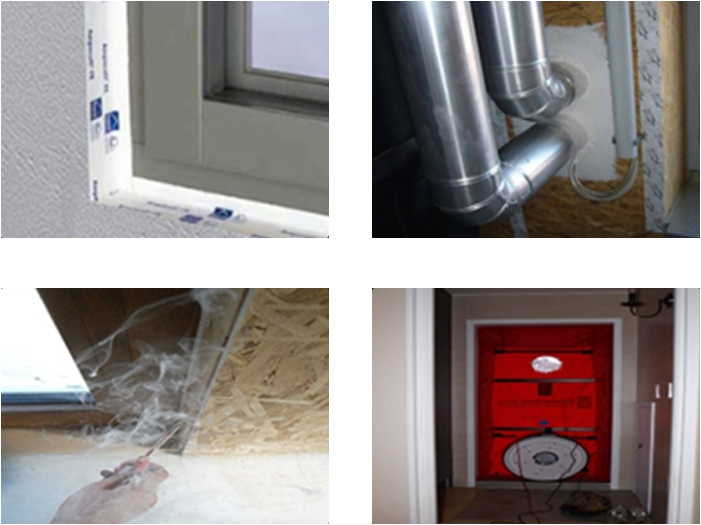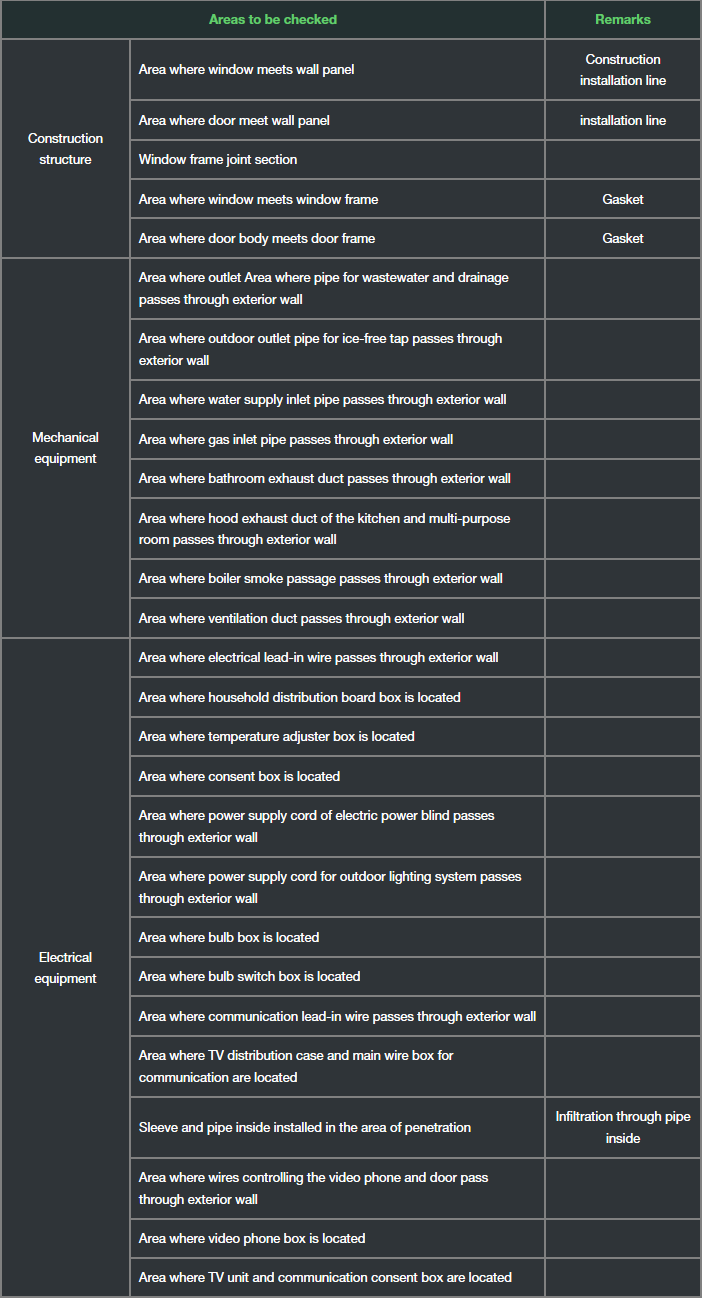WORLDDOMEHOUSE fully considers maintaining the air-tightness to prevent energy loss.
Air-tightness becomes even more important as an energy-saving measure as well as insulation. This is because insulation alone cannot guarantee the discharge of indoor energy to the outside.
Air-tight layer not only prohibits the heat loss caused by the discharge of indoor air to the outside, but also blocks moistures, which brings effective prohibition of dew condensation due to the temperature differences between indoors and outdoors.
There is no regulation regarding the air-tightness of buildings and the air-tightness requirement suggested by PHI (passiv.de) in Germany is 50pa≤0.6/h. This means discharged air volume to the outside per hour should be less than 60% of the total volume of indoor air when the atmospheric pressure difference between indoors and outdoors is 50pa. Average value of air-tightness in local timber houses is identified to be 10~30 (times/hour), which explains the energy efficiency of “container houses” or timber houses is very low.
WORLDDOMEHOUSE sets the air-tightness as 50pa≤0.6/h which is suggested by PHI (passiv.de) in Germany.
Membranes suitable for damp-proofing, air-tightness, and protection against the wind should be used, and careful attention should be paid to cracks, edges, overlapped areas, etc., during the construction.
Checklists for air leak areas during construction








